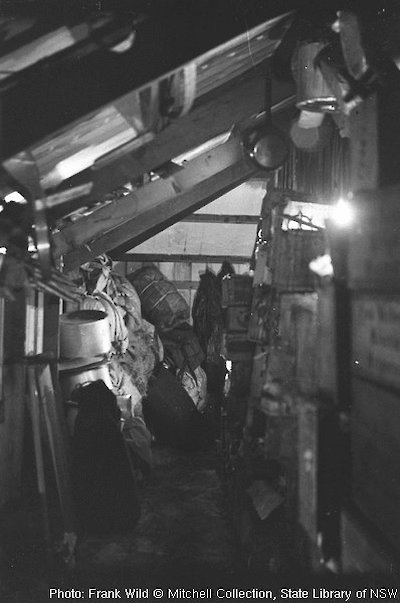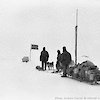Preparing for spring
Wild was well-satisfied with the way his men had come through their trial. ‘They had worked splendidly and were always cheerful, ’ he wrote, ‘although conditions had been exceptionally trying … No-one was any the worse for the hardships, except for a few blistered fingers from frost bites. ’
The dogs were another story. They had suffered from a shortage of fresh meat, and by mid-April two had died, leaving seven survivors. Not for long: three of the seven had been difficult in harness, and Wild determined that with the continuing shortage of food they would have to be shot. Another one died before winter was over, leaving only three for the spring journeys.
Autumn and winter outings were limited to hunting on the sea ice for increasingly-scarce seals and penguins, and exploring a large, grounded iceberg in fast ice about 15 kilometres out from the ice shelf. In a mid-August excursion the 40 kilometre long berg — first investigated about six weeks previously — was found to have overturned, and on its upturned base Hoadley and Watson found pebbles from the sea-bed.
Before the main sledging program could start, food depots needed to be laid. Keen to make the most of his party’s limited time in Antarctica, Wild determined that two depot-laying journeys — one across the ice shelf to the east and a second across sea ice to the west — would begin as soon as the returning light allowed.
Indoor preparations involved preparing and weighing food, hand-sewing calico ration bags (the sewing machine was unusable because of a missing part), and ensuring sledges and other gear were in running condition.


